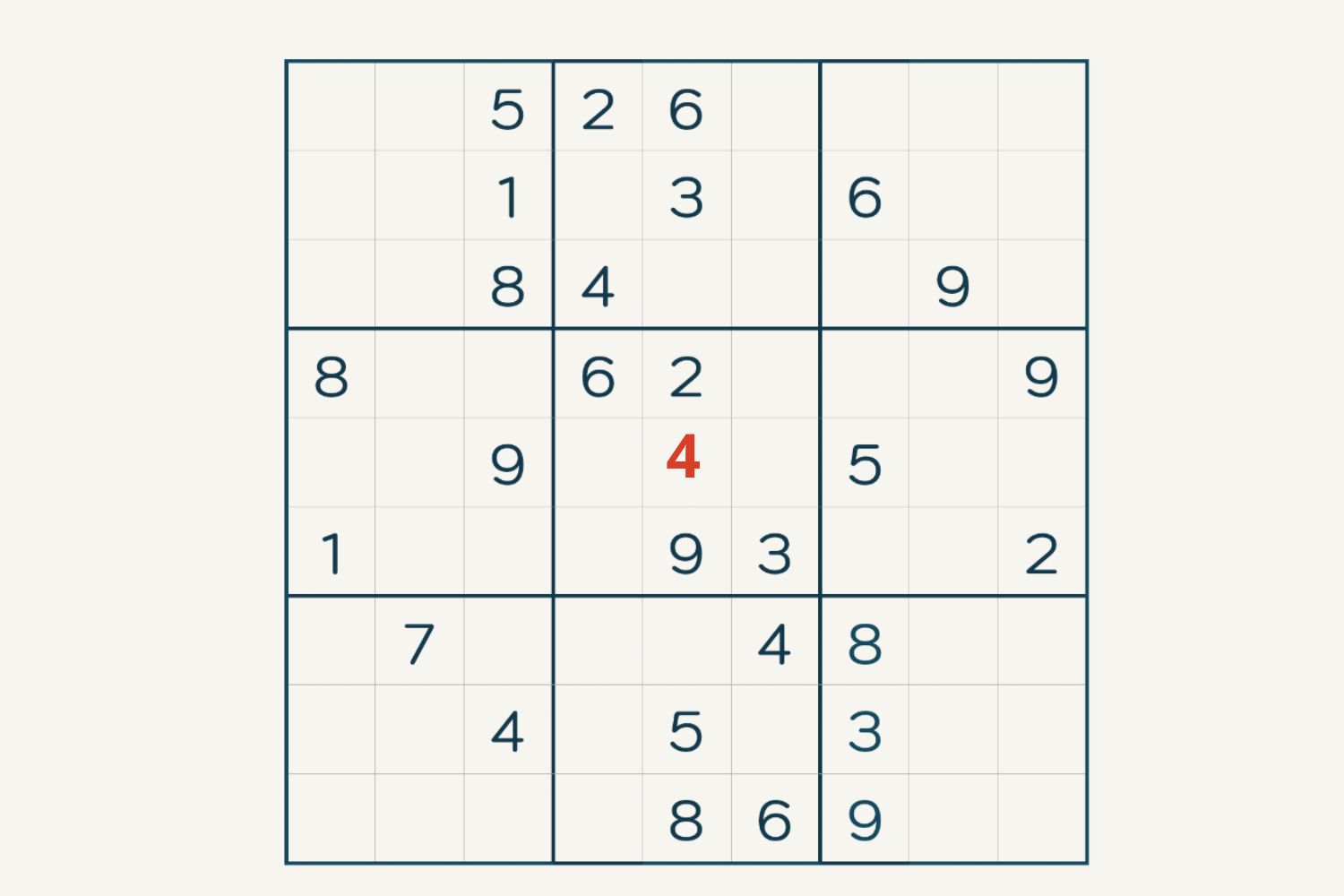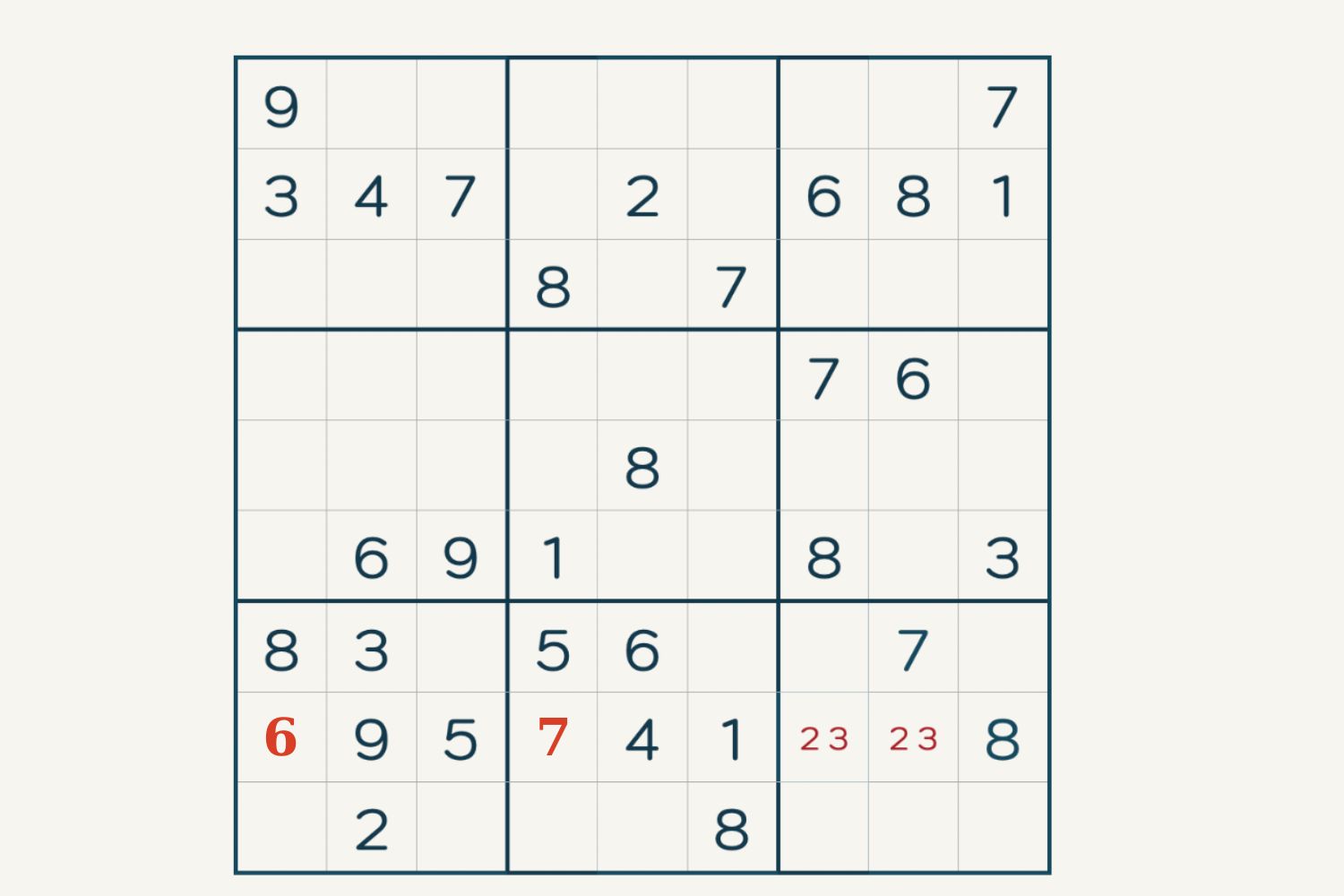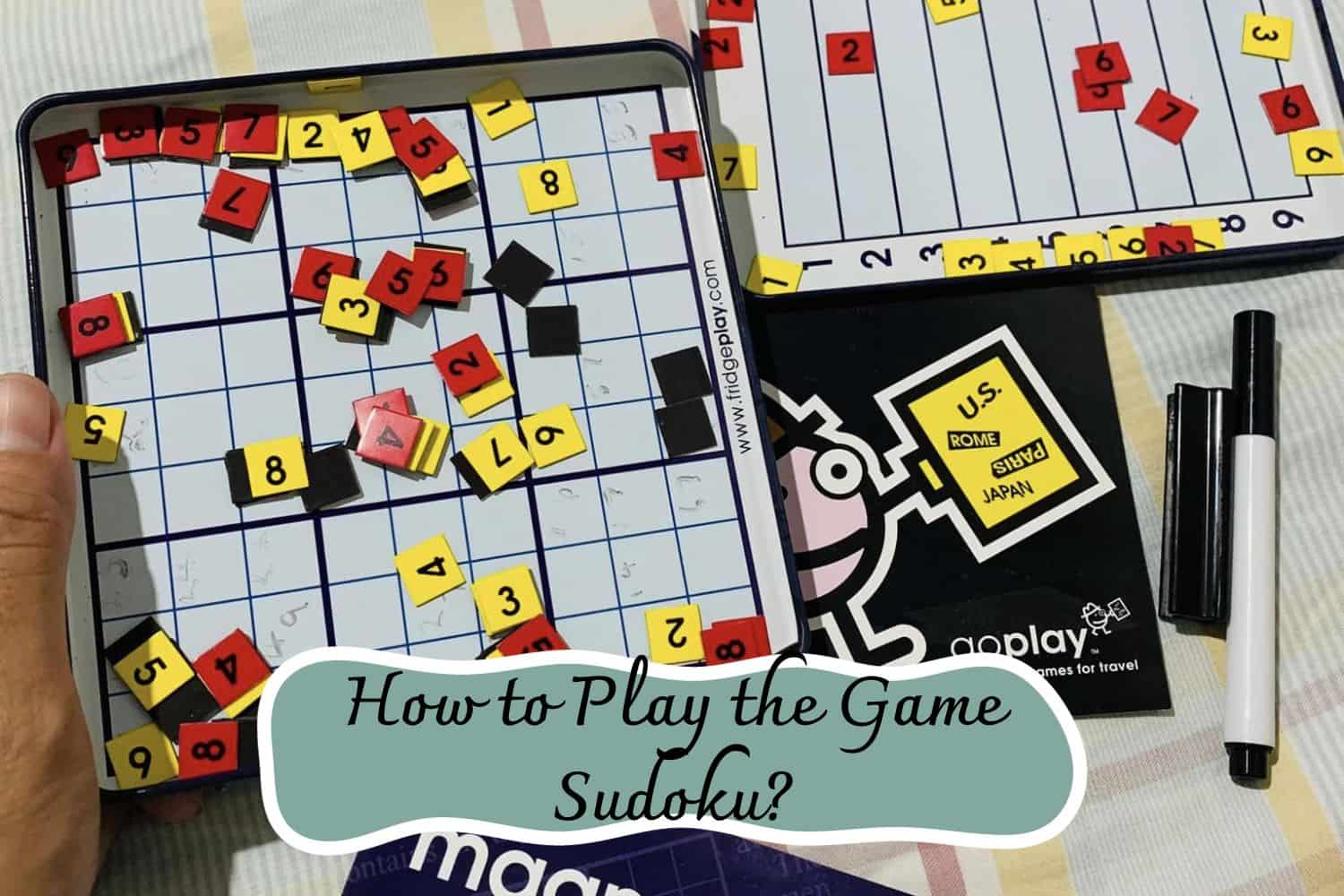Learn how to play the game sudoku with our easy step-by-step guide. We’ll explain the rules, strategies, and tips you need to become an expert player!
Learn How to Play the Game Sudoku | A Step-by-Step Guide
Are you ready to take on an intellectual challenge? Sudoku is a thrilling mental game that combines problem-solving and strategic thinking. It’s not only fun, but it also stimulates your mind and helps improve your critical thinking skills!
Whether you want to expand your skill set or take a break from more mundane tasks, learning how to play the game Sudoku can offer great rewards.
From understanding the basics of the game board right through mastering its advanced techniques – this article will help guide you step-by-step as you begin enjoying one of the world’s most beloved logic puzzles.
What Is Sudoku?
Sudoku is an engaging numbers game that originated in Japan. The name “sudoku” is a Japanese term meaning “single number”. This popular game quickly gained popularity around the world and has become a beloved pastime for many people.
According to Merriam-Webster, Sudoku is an intriguing game with a grid divided into 3×3 boxes. The ultimate goal? Fill every row, column, and box with the numbers one through nine, ensuring no repetition. Get ready for stimulating fun and sharpen your logical thinking skills with this addictive brain teaser.
Why Sudoku Puzzles Are Beneficial for Seniors?
Sudoku, a memory-training activity, offers numerous advantages for seniors. Similar to chess, it stimulates forward-thinking and strategizing skills, which serve as excellent brain exercises.
Recent research published in the International Journal of Geriatric Psychiatry reveals that engaging in thoughtful games like sudoku and crossword puzzles enhances cognitive performance in individuals aged 50 and above. Remarkably, participants who incorporated such puzzles into their daily routines demonstrated superior skills in reasoning, attention, and memory.
Let’s explore four key areas in which sudoku can assist seniors:
Concentration – By engaging in sudoku, seniors practice critical thinking that necessitates focused attention. As a result, their ability to concentrate on the task at hand improves significantly.
Learning – Consistently solving sudoku puzzles gradually enhances speed, indicating a deeper understanding of the game. This continuous learning experience can positively impact other cognitive tasks and boost overall brain performance.
Memory – Sudoku revolves around keeping track of numbers and their positions. Solving these puzzles regularly can sharpen memory skills, enabling seniors to retain information more effectively.
Relaxation – Even a brief 10-minute break to engage with a sudoku puzzle can provide a much-needed respite from daily concerns. This combination of mental activity and temporary distraction contributes to stress reduction and relaxation.
In conclusion, integrating sudoku puzzles into the routine of seniors offers a range of benefits, including improved concentration, enhanced learning abilities, sharpened memory, and relaxation. Start incorporating sudoku into your daily activities to experience these advantages firsthand.
Mastering Sudoku: The Three Essential Rules
Sudoku is a popular number puzzle game that consists of a 9×9 grid divided into 9 3×3 subregions or “boxes”. The objective is to fill in the empty cells with numbers 1-9, so that each row, column, and box contains the numbers 1-9 exactly once.
Rule #1: Each row holds the numbers 1-9 exactly once
To start, visualize the Sudoku grid divided into a 9×9 layout, forming rows from left to right. Within each row, you’ll find nine cells, some already filled with “given digits.” Your mission is to strategically place the numbers 1-9 into the empty cells, ensuring that each row contains all nine numbers without repetition.
Rule #2: Each column houses the numbers 1-9 exactly once
Similar to the rows, the columns play a crucial role in Sudoku. Picture nine vertical columns within the grid, and just like before, your objective is to fill each column with the numbers 1-9 without duplicates. With nine cells in each column, this rule ensures a unique solution.
Rule #3: Each 3×3 box encompasses the numbers 1-9 exactly once
Now, let’s focus on the smaller 3×3 subregions, often referred to as “boxes.” These nine distinct boxes within the Sudoku grid are an additional challenge. Here’s the catch: each box must contain the numbers 1-9 without repetition. Alongside the first two rules, every row, column, and box must uniquely hold all nine numbers.
Embrace these three vital rules, and conquer Sudoku like a pro! And remember, contrary to popular belief, there’s no additional rule requiring the two 9-cell diagonals to contain the numbers 1-9 once each.
Sudoku is a challenging yet enjoyable puzzle that requires logical thinking and attention to detail. By following these rules, you can successfully solve any Sudoku puzzle and experience the satisfaction of completing it.
How to Play the Game Sudoku?
Now that you have a good understanding of the rules of Sudoku and how they determine the gameplay, let’s delve into some key strategies to help you solve Sudoku puzzles effectively. By following these strategies, you will not only improve your solving skills but also gain a deeper appreciation for the game.
Avoid Number Repetition
The cardinal rule of Sudoku is to never repeat a number in the same row, column, or 3×3 box. When placing a number in the grid, ensure it does not clash with any existing numbers in its corresponding row, column, or box.
Avoid Guessing Solutions
Every Sudoku puzzle has a unique solution, meaning each cell should contain only one number. While you may initially have multiple options for a particular cell, there will always be only one correct number that fits the cell.
Use the Process of Elimination
Before placing a number in a cell, go through a thorough process of elimination to narrow down the possibilities. Only place a number in a cell when you have eliminated all other options, and there is only one number left that can fit the cell.
Master Pencil Marking
Learning how to effectively pencil mark is an invaluable skill in Sudoku solving. It involves making small notations in the vacant cells to keep track of possible numbers, crossing off eliminated options as you progress.
What’s Next?
Now that you know the rules and strategies for playing Sudoku, it’s time to put your skills to the test by solving some puzzles. Remember, solving Sudoku puzzles is the best way to enhance your abilities and become a better player. To further assist you on your Sudoku journey, we’ve compiled a list of helpful tips and tricks. Click the button below to access the list.
It’s important to note that Sudoku puzzles come in various difficulty levels. Some puzzles can be solved through simple elimination techniques, while others require more advanced strategies. Once you feel comfortable with the basics, challenge yourself by learning these techniques and tackling harder puzzles.
Good luck, and enjoy the fascinating world of Sudoku!
Tips And Tricks for Solving Sudoku
Get a head start on solving Sudoku
Starting a new Sudoku puzzle can be intimidating, especially if you’re new to the game. But don’t worry, we’ve got you covered. Here are some tips to help you get started and make your solving journey a little easier.
First, focus on finding rows, columns, or 3×3 blocks that already have more given digits. These areas will provide constraints that narrow down the possibilities for other empty cells in the same row, column, or block.
Additionally, pay attention to the frequency of numbers among the given digits. If there are more of a certain number, like five 9s, and fewer of another number, like no 2s, it’s usually easier to place one of the remaining 9s into the grid compared to finding a spot for one of the nine 2s.
With these tricks in your toolbox, you’ll be well-equipped to navigate any Sudoku puzzle that comes your way. Happy solving!
Finding Single Candidates in Sudoku
Single candidates, also known as naked singles, occur when a cell in a Sudoku puzzle has only one possible candidate. This happens when all other digits from 1 to 9 have been eliminated by other numbers in the grid.
Let’s take a look at the example Sudoku puzzle below. In row 7, column 5, there is only one candidate – the number 1. All other numbers from 2 to 9 already appear in the same row, column, or 3×3 block.
By finding and focusing on these single candidates, we can make progress in solving the puzzle. This emphasizes the importance of starting in areas with plenty of given digits.
Example of Sudoku grid with single candidates:

Work on your scanning techniques
Instead of trying to focus on the entire Sudoku grid all at once, take it one step at a time. Scan different rows, columns, and 3×3 blocks individually. This approach allows you to identify the easier areas and tackle them first.
To take this tip even further, once you feel confident, try scanning multiple areas simultaneously to see how they interact.
For example, if you scan along a row and a column and notice that they contain a large number of digits when combined, you’ll quickly realize that the cell where they intersect will have limited possibilities.
Enhance your Sudoku-solving abilities by mastering this scanning strategy.
Avoid fixating on one area for too long
To effectively scan through a grid, it is crucial not to spend excessive time on a single section.
If you find yourself doing so, it probably indicates that you need to place digits in other parts of the grid before you can progress with that specific section.
Therefore, it is essential to develop the skill of shifting your focus across the grid and identifying which area can be tackled first. This way, you can return to the more challenging sections later on.
Maintain Your Momentum
Sudoku is a puzzle that relies heavily on momentum. To solve certain sections of the grid, you must strategically place digits elsewhere first.
As you begin to fill in the grid, you will quickly discover that resolving other empty cells can occur in a cascading effect.
To achieve success, it is crucial to carefully examine rows, columns, and the 3×3 blocks each time you add a new digit. This method could potentially unlock new cells, leading you closer to victory.
Make use of pencil marking
Utilize pencil marking to streamline your Sudoku-solving process. By marking possible candidates into empty cells, you can eliminate options and progress toward solving the puzzle.
Not only does pencil marking help refine your scanning skills, but it also aids in identifying naked pairs and hidden pairs.
For a comprehensive guide on how to effectively pencil mark Sudoku puzzles, be sure to read our informative resource.
Uncovering the Power of Naked Pairs
Discover the secret of naked pairs in Sudoku puzzles. A naked pair occurs when two empty cells can only hold the same two possible numbers.
See an example of a naked pair highlighted below.
Pro Tip: Find naked pairs to advance your Sudoku game.
Take a look at the two empty cells in row 8. They can only contain a 2 or a 3, eliminating these numbers from other empty cells in the same row and 3×3 block.
No matter how you arrange the 2 and the 3, it becomes impossible to place them elsewhere in the row or block.
Uncovering naked pairs brings incredible benefits. Restricting the available options around them can lead to the revelation of new digits that can be confidently placed.
In our example, the cell in column 4, row 8 becomes so restricted that it can only hold a 7.

How Naked Pairs Help Crack Sudoku Puzzles
Although we haven’t determined the correct placement for the 2 and the 3, identifying the naked pair allows us to confidently add a new digit to the grid.
Building upon this success, the first cell in the row must be a 6 to ensure that row 8 contains all the digits from 1 to 9.
Unleash the power of naked pairs and take your Sudoku-solving skills to the next level.
Uncover concealed pairs
In addition to naked pairs, there is a related concept known as hidden pairs.
The distinction between a pair being naked or hidden depends on whether the pair represents the only two possible candidates or not.
For example, if there is no 7 in the bottom right box as shown above, we would not have a naked pair, but we would still be able to place the 6 in the first cell of the grid.

Master More Advanced Sudoku Strategies
As you progress from easy to challenging levels, you’ll need to employ increasingly advanced strategies to solve Sudoku puzzles.
While pencil marking and X-wings are foundational techniques, the more difficult the puzzle, the more complex the strategies you’ll need to grasp.
This adds to the excitement of conquering Sudokus, as you expand your problem-solving abilities.
If you encounter a particularly tough Sudoku, you might consider using a Sudoku solver as a helpful tool. While it won’t solve the puzzle for you, it can offer guidance on the strategies needed to crack it.
Continually Reassess
With each new number added to the Sudoku grid, ask yourself, “What has changed? What new information has been gained from placing that number?”
When a number, such as 5, is successfully placed in a horizontal row, consider how it impacts the surrounding squares. Every placement presents an opportunity to potentially uncover more numbers in adjacent rows and squares, depending on the existing known numbers.
This constant evaluation is one of the most fulfilling aspects of playing Sudoku, as each step taken brings you closer to the ultimate solution.
Stay patient and savor the thrill of the hunt
It’s important to remember that the ultimate goal is not just completing the puzzle, but also relishing the challenge and stimulating your mind as you unwind. Should frustration arise, take a break and let your thoughts reset before giving it another shot. Above all, prioritize enjoyment and have a great time.
FAQs
What should I do if I get stuck on a Sudoku puzzle?
If you are stuck on a Sudoku puzzle, try taking a break and coming back to it with a fresh perspective. You can also try using advanced problem-solving strategies or consulting a Sudoku solver for guidance.
What is the best way to improve my Sudoku skills?
Practicing regularly and utilizing techniques such as scanning, pencil marking, and identifying naked pairs can greatly improve your Sudoku-solving abilities. Additionally, challenging yourself with puzzles of varying difficulty can also help improve your skills.
Is it cheating to use a Sudoku solver?
Using a Sudoku solver is not considered cheating, as it only offers guidance and does not solve the puzzle for you. However, if you are trying to improve your Sudoku skills, it may be better to attempt solving the puzzle on your own before consulting a solver. Overall, the most important aspect of playing Sudoku is enjoying the challenge and sharpening your critical thinking skills. So use tools like a solver as needed, but don’t rely on them entirely. Keep pushing yourself and have fun!
Why do people enjoy playing Sudoku?
Sudoku offers a unique combination of relaxation and mental stimulation. Many people find it to be a calming activity that helps them unwind, while also providing a challenge for their problem-solving abilities. The satisfaction of completing a puzzle and the constant opportunity for improvement make Sudoku an enjoyable pastime for many.
Can I play Sudoku on my phone or computer?
Yes, there are many mobile apps and online versions of Sudoku available for players to enjoy on their phones or computers. These platforms often offer features such as automatic pencil marking and a timer for those who like to compete against themselves or others. So go ahead and try out different versions to find your favorite way to play Sudoku!
Is it possible to create my own Sudoku puzzle?
Absolutely! With a little bit of practice, anyone can create their own Sudoku puzzle using a grid and a set of rules. You can start by filling in known numbers, making sure to follow the rule that each row, column, and 3×3 box contains all the digits from 1 to 9. From there, you can use different techniques to add more clues and create a unique puzzle for others to solve. Who knows, maybe you’ll create the next viral Sudoku challenge! So don’t be afraid to get creative and have fun with it.
What type of math is sudoku?
It’s not just about math! While logic plays a central role in solving these captivating puzzles, there’s no need for complex calculations. Instead, it’s all about deductive reasoning and strategic decision-making.
Dive into a world where math takes a backseat, and the thrill of logical problem-solving reigns supreme. Delve deeper with insights from the esteemed Department of Mathematics at Cornell University, as they reveal how the art of sudoku combines logic and trial and error.
Uncover the intriguing intricacies that puzzle masters employ in designing an array of stimulating sudoku grids.
Where does Sudoku get its name?
Back in 1979, American Howard Garns conceived the puzzle that is widely recognized today and introduced it in Dell Magazines under the title “Numbers in Place.”
Fast forward to 1984, Maki Kaji of Japan featured the grid in his magazine at Nikoli, the renowned puzzle company. Kaji ultimately bestowed the name “sudoku,” which translates to “single numbers” in English.
As Sudoku gained popularity worldwide, the name stuck and became synonymous with this captivating game of logic.
How do I get started?
If you’re new to Sudoku or looking for a refresher, check out our beginner’s guide that will help you understand the basics and set you on your way to mastering this addictive puzzle. From tips on how to fill in the grid and pencil marking techniques to an in-depth explanation of the rules, we’ve got you covered.
Once you’re comfortable with the fundamentals, dive into our more advanced strategies section to take your Sudoku skills to the next level.
Whether you’re a beginner or an experienced player, there’s always something new to learn about Sudoku. Keep exploring and enjoy the journey!
What are the benefits of sudoku?
Engaging in logic-based puzzles, such as sudoku, offers notable benefits for your brain health. A recent cross-sectional study highlighted by Healthline in May 2019 revealed that individuals who actively participate in games like sudoku and crosswords perform exceptionally well on subsequent cognitive tests.
Remarkably, the study suggests that individuals who regularly solve puzzles like sudoku may have brain functionality equivalent to someone ten years younger than their actual age. Although further research is required to definitively confirm this finding, the authors of the study emphasize the value of continuing to challenge your mind with puzzles to sharpen your cognitive skills.
Unlock the potential of sudoku and harness its power to enhance cognitive abilities and maintain youthful brain function.
Conclusion
All in all, Sudoku is an enjoyable game that can bring people hours of entertainment. Whether it be through solving a simple puzzle or tackling a harder one, it’s an excellent way to spend your free time – and even improve your mental acuity in the process!
Challenge yourself to master the game by trying out different levels; you may surprise yourself with how much fun you can have playing this classic game. And if you get stuck?
Don’t worry – there are plenty of resources out there for help. Next time you have some downtime, pick up a Sudoku puzzle and let the game begin!
Thanks for reading our article How to Play the Game Sudoku? If you want to know more information, visit our website here.
Read more:

